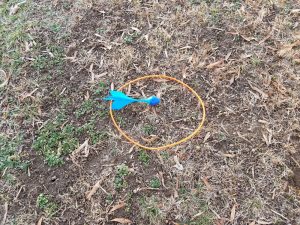Maintaining a wood-burning fireplace means you have to stay on top of ash removal. It’s key to keeping the fireplace running as smooth as a breeze. This article will give you the lowdown on how to best remove and dispose of that ash.
Now, let’s start with some numbers. A single cord of wood can churn out around 50 pounds of ash. And picture this; each household can burn up to 3 cords of wood a year. That means you will have a whole mess of ash that needs clearing out.
How often to remove ash
It might seem logical to scoop out the ash as soon as it starts piling up in your fireplace. But hold on, because there’s a good reason to keep a bed of ash in there, about an inch deep.
See, that layer of ash grabs hot coals, and insulates them, keeping that heat going strong for longer.
But here’s the deal. If that ash starts piling way past that one-inch mark, or when the wood-burning season is coming to a close in the spring, it’s time to take some action.
This is because ash is acidic which can spell trouble for the bottom of your fire grate or firebox. We don’t want corrosion messing with our fire feature. Plus, that excess ash can mess up the proper combustion. Neither do we want that.
How to remove ash from a fireplace
First, give that ash some time to cool down, about 1 or 2 days, just to be safe. We don’t want any hot embers lurking around. And even then, you have to treat the ash like it’s still hot and be careful.
Get yourself some protective gloves and a trusty respirator or mask. Wood ash can be caustic, meaning it has a high pH level. There is nothing harmful about wood ash, but it’s a whole different story if you inhale it. Use a respirator to keep your lungs safe.
Open up your fireplace door and position a metal bucket in front of it. Preferably that bucket should have a close-fitting lid.
Next, grab yourself a trusty small metal rake and a sturdy shovel. Use that rake to gently push the burning coals to the back, keeping them separate from the ash. Then, take the trowel or shovel and scoop up that ash into the metal bucket.
Smedley & York Black Ash Bucket with Lid
2 Gallon Fireplace Metal Bucket
Complete, High-Quality Fireplace Cleaning Tools-Keep your home’s fireside clean
- 12″L x 12″W x 12″H
- Lightweight:2.02 Kilograms
- 2 Gallons
- Charcoal Bucket Comes in 3 Neutral Colors
Find yourself an open area and set that ash bucket down. If the weather’s cooperating, you can keep it outdoors, just not on a windy day.
Keep it out of reach of pets and kids, though. Be sure it’s sitting on a solid surface like brick or concrete. Smoldering ashes can give off enough heat to damage surfaces like wood or composite material.
Here’s a little trick: sprinkle a bit of water over the ashes before sealing up that bucket. That’ll dampen them and deprive them of the oxygen they need for combustion. Give it about 3 days, and then you can transfer the contents of that bucket to a pit or receptacle.
If you prefer keeping the ashes indoors, find yourself an enclosed patio or garage. But make sure it’s away from any flammable items like paper, cardboard, gasoline, or kerosene.
But hold on a minute, before you go tossing those ashes away, there are other ways to put them to good use. Allow me to share some creative ideas with you;
1. Gardening & Composting:
Attention, green thumbs! Wood ash (Pot-ash/Potassium-ash) is a nutrient-rich substance that works wonders in your soil.
When incorporated into the soil, it provides valuable lime and potassium, along with essential trace elements that promote plant growth.

It can also buffer pH levels, especially in acidic soils. However, avoid applying ashes directly to acid-loving plants like blueberries, as excessive amounts can restrict nutrient uptake since some of the minerals such as iron may be tied up by excessive potassium.
To get optimal results, lightly sprinkle and mix ash into your compost or wood mulch pile to boost its nutrient content. Just keep in mind that hardwood ash has higher nutrient and mineral levels compared to softwood ash.
2.Pest Control:
Wood ash can also be used as a natural pest control.
Sprinkling it around the base of your plants can help repel pests like slugs and snails. However, keep in mind that its effectiveness is reduced if it gets wet.
3.De-Icing:
During winter, wood ash combined with potassium salts can be a valuable resource for de-icing pathways and driveways. It acts as a natural ice melter and helps improve tire traction on slippery surfaces.
While it may not be as swift as commercial de-icers, its dark color absorbs heat from the sun, aiding in the melting of ice and snow.
4.Cleaning Oil Stains:
Got stubborn oil stains on your pavement? Wood ash can come to the rescue.
Similar to sawdust, ash can effectively absorb oil spills. Keep a bucket of ash handy in your workshop or garage for quick response and containment of accidental spills. Sprinkle the ash on the stain, let it sit for a few minutes, then sweep it up. Your pavement will be spotless once you are done.
5.Moisture & Odor Absorption:
Wood ash possesses desiccant properties, making it great for absorbing moisture.
Placing small amounts in areas like bathrooms, damp basements, or crawlspaces can help reduce moisture levels and create a drier environment.
Additionally, wood ash serves as a natural odor absorber. Sprinkle it in smelly trash cans, behind the fridge, or in rooms prone to unpleasant odors. It will help neutralize and eliminate bad smells over time.
6. Cleaning Agent:
Wood ash can be a powerful cleaning agent for various purposes.
Use it to clean glass fireplace doors by dampening a sponge and dipping it in ash dust. Then, gently scrub the doors to restore their clarity.
You can also create a paste by mixing ash and water to polish silverware and silver jewelry, giving them a sparkling shine.
7. Pond Algae Control:
If you’re dealing with excessive algae growth in your pond, wood ash can help. Sprinkling ash on the water can assist in managing and controlling the overgrowth.
Use approximately one tablespoon of ash per about 1000 gallons of water in your pond. This introduces potassium into the pond, promoting the growth of aquatic plants that compete with algae and slow down its proliferation.
Avoid excessive usage as it can raise pH levels, trigger algae blooms, and obstruct filters. Small quantities of wood ash won’t harm the pond ecosystem.
8. Homemade Soap:

In ancient times, wood ash was used to create lye, a vital ingredient in soap production. You can also embark on a DIY adventure by making soap from wood ash.
The resulting soap may have a different texture and fragrance compared to commercial brands but remains highly effective for various cleaning tasks.
The steps for making involve sifting the ash, boiling it in water to obtain lye, and cooking it down with rendered animal fat. Additional ingredients like essential oils can be added for fragrance. Set the soap to set in molds to shape it before using it cleaning.
To wrap things up.. ?
There you have it! Eight fantastic uses for the wood ash from your fireplace. So don’t be too quick to discard those ashes. Embrace their potential and put them to good use around your home.






